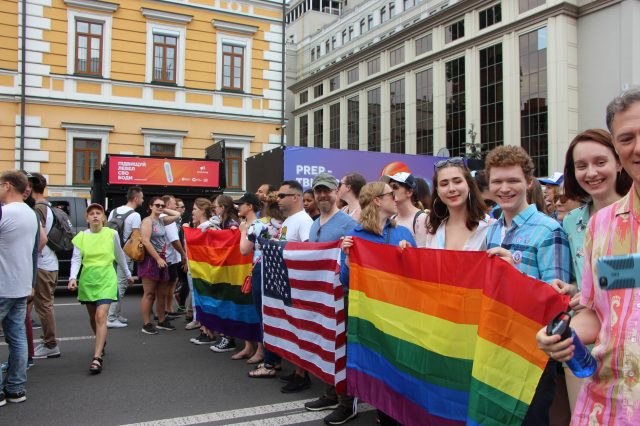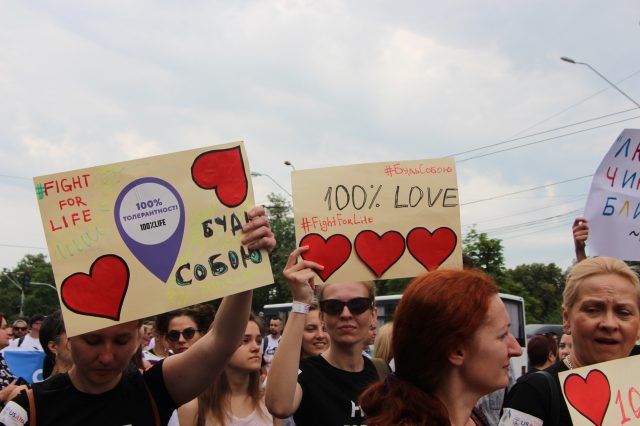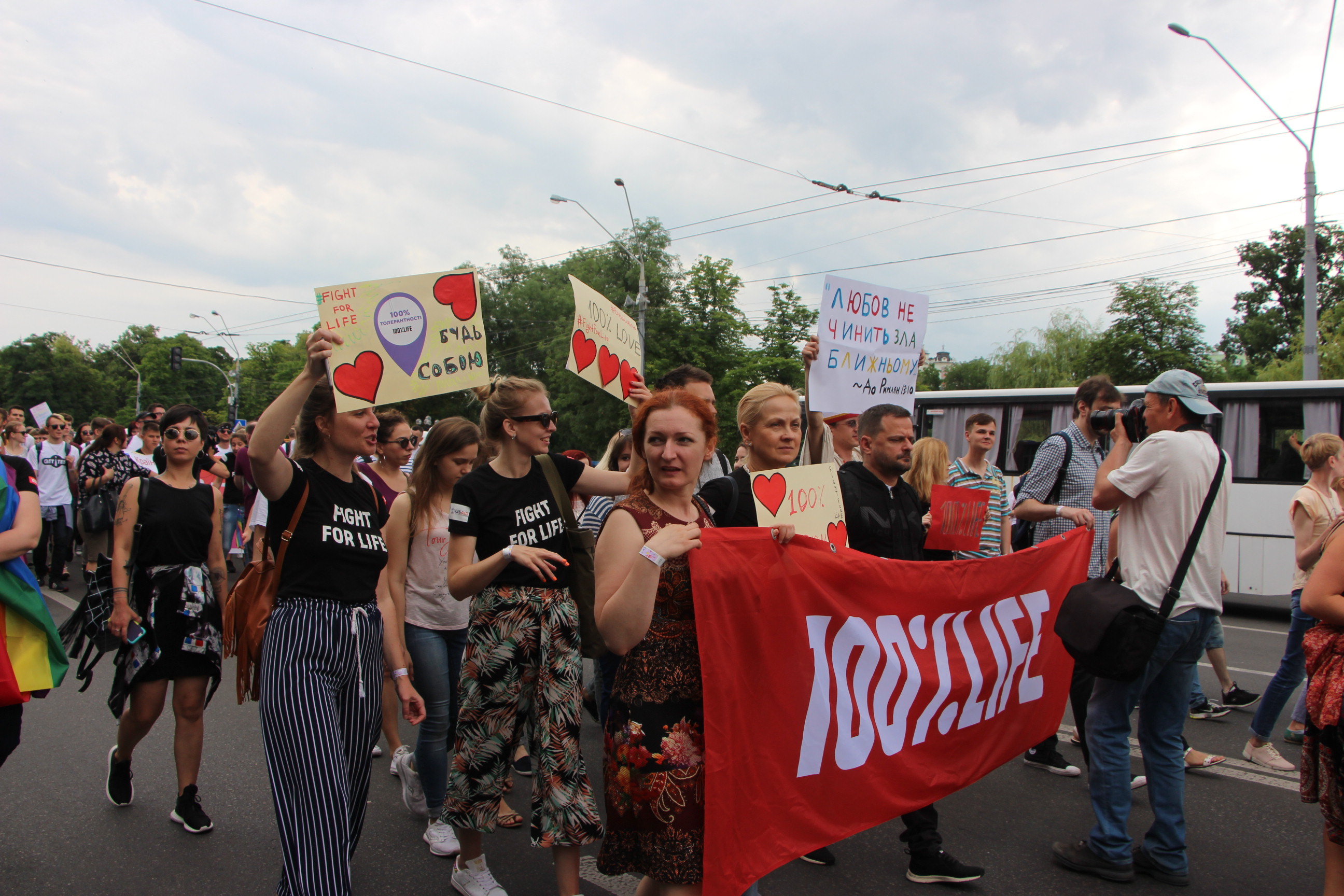The event passed mostly without incident, thanks to the presence of thousands of police officers. Before the march began, police detained 56 counter protestors as violence broke out between the anti-LGBT activists and the Pride participants.
The event has historically been a focal point for violent resistance by nationalists. In 2015, a gay pride march was called off when right-wing activists pelted participants with smoke grenades. But events in 2016 and 2017 were largely peaceful thanks to a substantial police presence. Clearly, support for LGBT rights by the government and in society has come a long way.

Sergey Leshchenko, a Ukrainian MP who attended this year’s Pride, said: “Putting an end to discrimination and violence against people on the basis of their sexual orientation is important in bringing Ukraine closer to Europe.”
He said that, while there’s less violence, less provocation and more support for human rights, the Pride event should not need protection by so many police officers. For him, it is evidence that Ukraine still has a long way to go with regards to respecting the LGBT community.
Since a pro-Western government was elected to power after the 2014 Maidan protests, which saw the ousting of President Viktor Yanukovych, Ukrainian authorities have increased their commitment to protecting LGBT rights.
In 2015, Ukrainian authorities passed a law banning workplace discrimination against the LGBT community.
Although most Ukrainians consider themselves pro European, tolerance toward the LGBT community is low and homophobia is widespread in Ukraine. In 2017, LGBT rights activist Tymur Levhcuk believed ninety percent of Ukrainians were still unaware there are lesbians, gays, bisexual, transgender and intersex people around them, at home, at work, in villages, towns and cities all over Ukraine.
A 2017 report by Nash Mir, a human rights organisation, states: ‘The central government continues declaring equal rights for LGBT people, while being in no hurry to fulfil its obligations under the Action Plan on Human Rights.’
Nash Mir Center in 2017 documented 226 cases of acts motivated by homophobia / transphobia, discrimination and other violations of LGBT people’s rights in Ukraine.

Ukraine’s government has recently come under fire by Amnesty International, Human Rights Watch and Front Line Defenders, who wrote a joint letter to the Ukrainian Interior Ministry and the Prosecutor General’s Office expressing their concerns about the rise in hate crimes.
“Brutal attacks on Roma people, LGBT people, and rights activists have been on the rise in recent months in Ukraine,” said Tanya Cooper, Ukraine researcher at Human Rights Watch. “The government has taken little action in response, which cannot but embolden and encourage the attackers.”
In 2012, Pride attracted just 100 marchers and 500 counter protestors. This year’s Pride shows how much support for LGBT people has grown over the past 6 years. But the ongoing impunity surrounding homophobic violence remains a problem and needs urgent attention. If Ukraine aspires to join the European Union (EU), the government will have to comply with European standards protecting the rights and interests of LGBT people.
Photos: Madeline Roache

